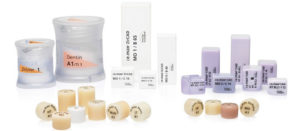Materials for bonding and cementing are the foundation upon which a predictable, aesthetic, and durable case is built.
In this blog, Dr. Brady explains why she chooses to rely on e.max for her bonding and cementing needs. She gives an introduction to the material, outlining how it can be used most effectively in concert with the lab.
 Why I Love e.max for Cementing and Bonding
Why I Love e.max for Cementing and Bonding
One of my favorite materials today is e.max from Ivoclar Vivadent. It is an incredibly versatile ceramic that combines strength and esthetics.
We can use it as a core with layering ceramic. We can use it as a monolith. It can be bonded or cemented to allow us flexibility in our clinical application.
With all of these advantages, one of the challenges is to make sure that in our lab communication we share how we are using e.max. Why? Because in the posterior if we intend to cement a monolithic e.max crown the minimum occlusal thickness is 1.5mm.
When the restoration will be bonded to the tooth the minimum occlusal thickness is 1mm. I know the lab is my advocate in producing optimal results for my patients.
To this end they will call me and let me know when I have not created enough occlusal clearance. They will give me the option of a reduction coping or bringing the patient back in to adjust the preparation and take a new impression …
Part 2 of Dr. Brady’s thoughts on e.max will appear on the blog soon. She will describe how to overcome the primary challenge of e.max.
You can read Dr. Brady’s take on problem solving crown cases here. And don’t miss this post on improving lab-processed restorations.
How important are the quality of materials to you in your practice? We’d love to hear from you in the comments!


